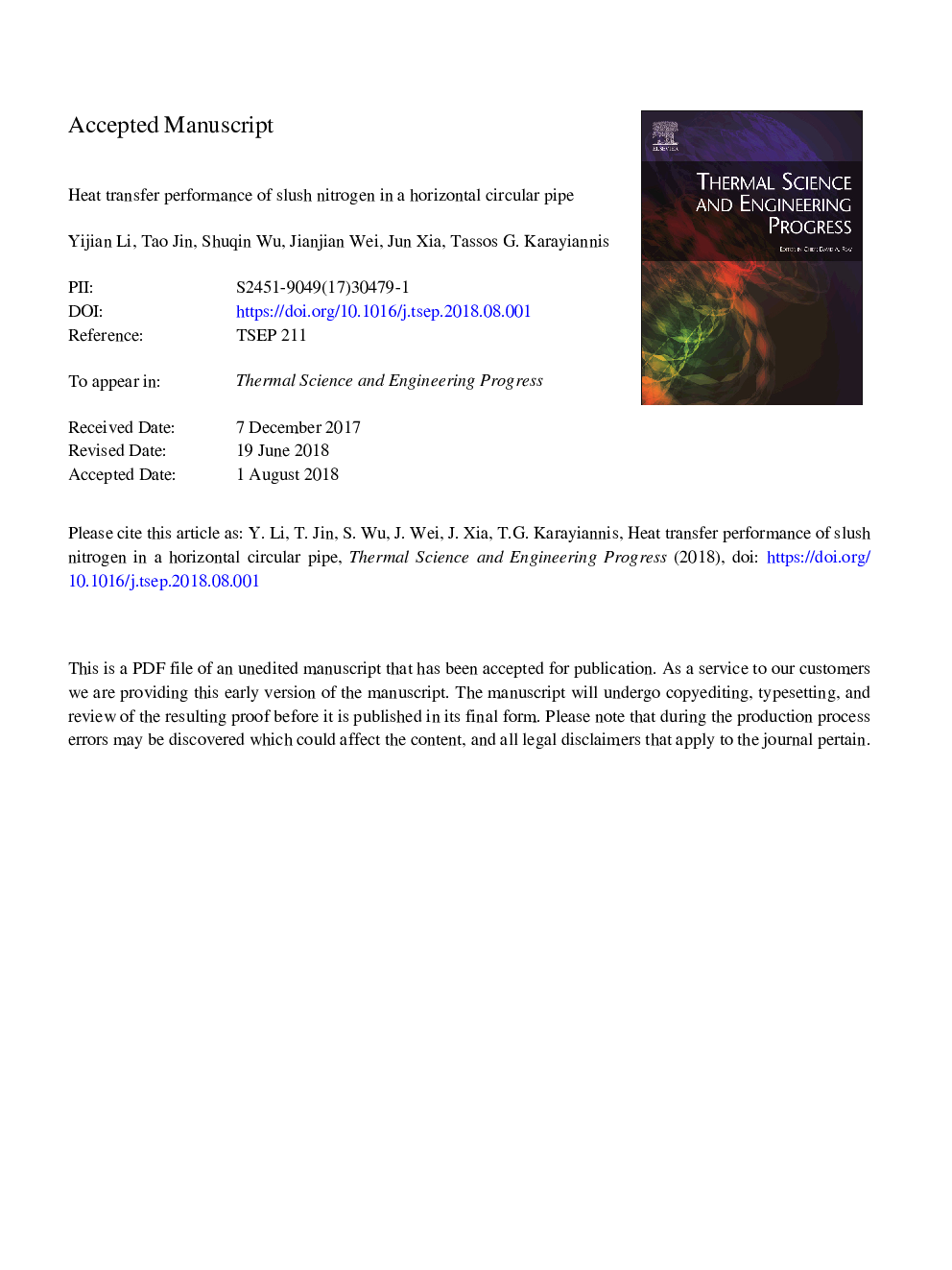| Article ID | Journal | Published Year | Pages | File Type |
|---|---|---|---|---|
| 8918635 | Thermal Science and Engineering Progress | 2018 | 35 Pages |
Abstract
Slush nitrogen is considered to be a potential coolant for high temperature superconducting cables. In this study, the heat transfer characteristics of slush nitrogen flow in a horizontal circular pipe were experimentally and numerically studied. The numerical results for the heat transfer coefficient agree well with the experimental results, with the relative errors within ±10%. The effect of the particle concentration and size, the pipe size and the flow velocity on the forced convection of slush nitrogen and the solid-liquid interfacial heat transfer were discussed. The heat transfer coefficient in the slush nitrogen pipe flow is found to be lower than that of the subcooled liquid nitrogen (at 63.15â¯K) at the same flow velocity and to decrease with increasing solid fraction. The mechanism of the heat transfer deterioration phenomenon of slush nitrogen was analyzed. In addition, a modified experimental empirical correlation for the Nusselt number of slush nitrogen flow was obtained, which can be applicable for different flow regimes (i.e., homogenous flow, heterogeneous flow and sliding bed flow). The correlation considered the influence of particle conditions on the interfacial heat and mass transfer and has an accuracy within ±10%.
Related Topics
Physical Sciences and Engineering
Energy
Energy Engineering and Power Technology
Authors
Yijian Li, Tao Jin, Shuqin Wu, Jianjian Wei, Jun Xia, Tassos G. Karayiannis,
